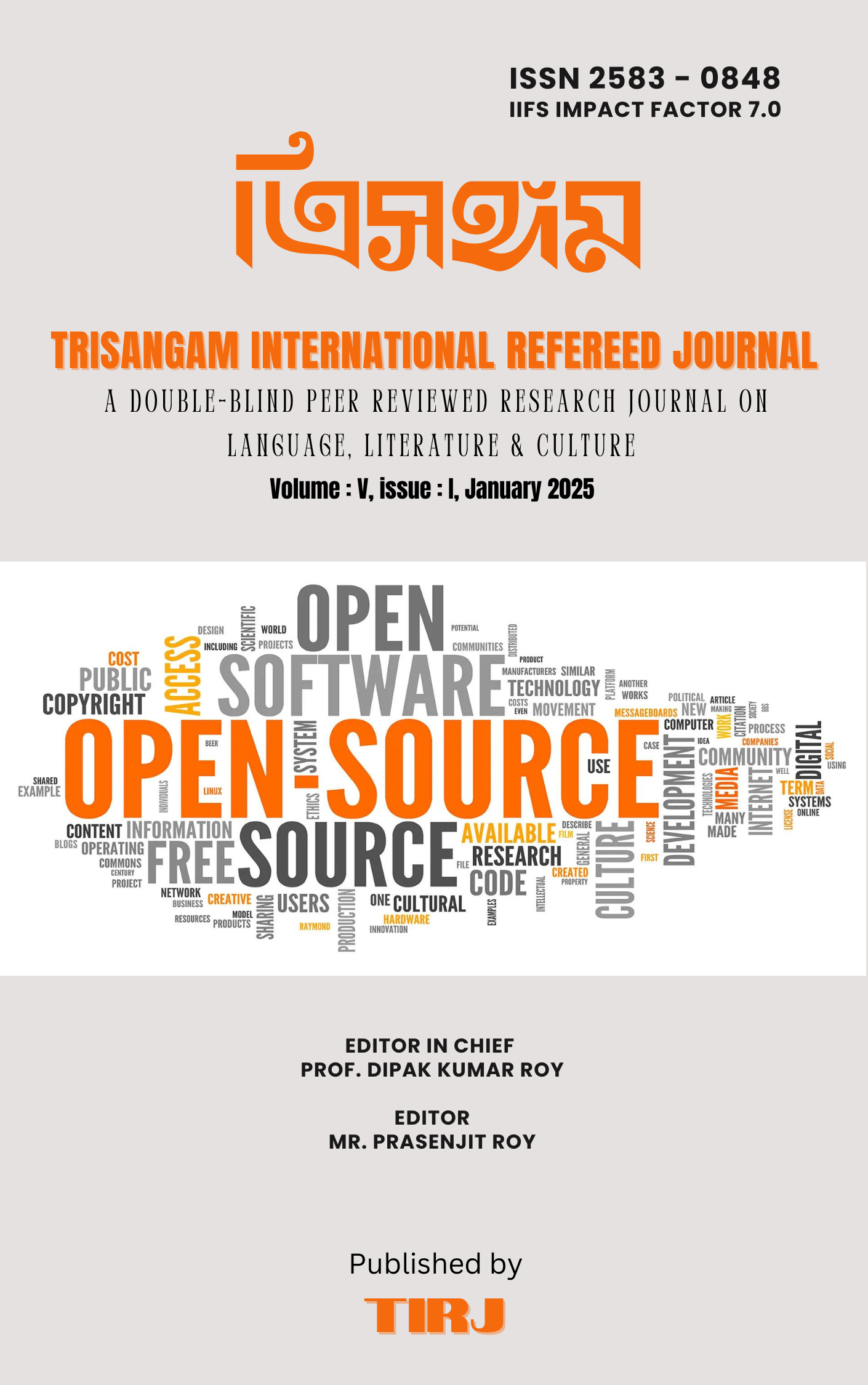The Practice of Sati and Rammohan as Reformer/ সহমরণ প্রথা ও নিবর্তক রামমোহন
Keywords:
- Widow,
- Conservative,
- Argument,
- Superstition,
- Promoter,
- Preventor,
- Celibacy,
- Forbidden
Abstract
In the first half of the nineteenth century, one of the most pervasive social maladies afflicting Bengali society was the practice of sati (ritual widow immolation). Following their husbands’ deaths, widows often resorted to self-immolation to escape the future suffering of widowhood and protect themselves from the predatory gaze of men. This voluntary death elevated the widow to the status of a goddess, thereby solidifying the practice of sati as a cultural ideal in India. The practice assumed several forms, including sahamarana (self-immolation), anumaran (consensual death), and sahasamadhi (joint burial). However, not all widows voluntarily chose sati. In many cases, the practice was imposed upon them to relieve families of the perceived burden of the widow or to allow relatives to claim her property. Some were coerced through force or drugging. While many widows went willingly, it remains indisputable that the practice was profoundly inhumane. Yet, to the conservative Hindu society, it was often dismissed as a trivial matter. Against this backdrop of social crisis, Raja Rammohan Roy emerged in the early nineteenth century with a mission to eradicate the practice. In his efforts, he sought to shape public opinion and draw attention to the issue among both Indian reformers and the British administration through three meticulously argued essays: ‘Sahamaran Bisay Prabarttak O Nibarttaker sambad’ (1818), ‘Sahamaran Bisaye Prabarttak O Nibarttaker Dbitiya sambad’ (1819) and ‘Sahamaran Bisay’ (1829). To demonstrate the non-scriptural nature of sati, Rammohan Roy cited authoritative texts from Hindu scriptures, eliminating any scope for superstition or myth. Drawing from the Manusmriti, he argued that widow immolation or anumaran was neither obligatory nor central to Hindu dharma, emphasising the scriptural preference for brahmacharya (celibacy). He categorically denounced the forced immolation of widows as ‘premeditated murder of women’. His advocacy sought to awaken compassion, kindness, and love in the hearts of conservative Hindus. However, despite his staunch opposition to sati, Rammohan Roy did not explicitly propose a method for its abolition. The arrival of Lord William Bentinck as Governor-General in 1828 marked a turning point. Deeply disturbed by the plight of women, Bentinck expressed keen interest in eradicating the barbaric practice of sati. Ultimately, on December 4, 1829, he formally outlawed the practice through legislation. In conclusion, while the legislative abolition of sati was a significant milestone under Bentinck, the credit for galvanising public opinion, supporting the law’s implementation, and ensuring its enforcement rightly belongs to Raja Rammohan Roy.
Downloads
References
১. বসু, স্বপন, বাংলায় নবচেতনার ইতিহাস, কলকাতা-০৯, পুস্তক বিপণি, তৃতীয় সংস্করণ, অক্টোবর ২০০০, পৃ. ১১৯
২. দে, অধীর, আধুনিক বাংলা প্রবন্ধ সাহিত্যের ধারা (প্রথম খণ্ড), কলকাতা-০৭, উজ্জ্বল সাহিত্য মন্দির, পরিমার্জিত চতুর্থ সংস্করণ, সেপ্টেম্বর ২০১২, পৃ. ২০
৩. তদেব, পৃ. ২৫
৪. বন্দ্যোপাধ্যায়, ব্রজেন্দ্রনাথ ও শ্রীসজনীকান্ত দাস (সম্পাদনা), রামমোহন গ্রন্থাবলী (তৃতীয় খণ্ড), কলকাতা-০৬, বঙ্গীয় সাহিত্য পরিষৎ, তৃতীয় সংস্করণ, ১৩৮০, পৃ. ৩
৫. তদেব, পৃ. ৪
৬. তদেব, পৃ. ৫
৭. তদেব, পৃ. ১১-১২
৮. তদেব, পৃ. ১৫
৯. তদেব, পৃ. ২৪
১০. বন্দ্যোপাধ্যায়, অসিতকুমার, বাংলা সাহিত্যের ইতিবৃত্ত (ষষ্ঠ খণ্ড), কলকাতা-৭৩, মডার্ণ বুক এজেন্সী প্রাইভেট লিমিটেড, পুনর্মুদ্রণ, ২০১০-২০১১, পৃ. ১৪৮
১১. বন্দ্যোপাধ্যায়, ব্রজেন্দ্রনাথ ও শ্রীসজনীকান্ত দাস (সম্পাদনা), রামমোহন গ্রন্থাবলী (তৃতীয় খণ্ড), কলকাতা-০৬, তৃতীয় খণ্ড, বঙ্গীয় সাহিত্য পরিষৎ, তৃতীয় সংস্করণ, ১৩৮০, পৃ. ৩৯
১২. তদেব, পৃ. ৪৪
১৩. তদেব, পৃ. ৪৫
১৪. তদেব, পৃ. ৪৫
১৫. তদেব, পৃ. ৪৬
১৬. তদেব, পৃ. ৪৭
১৭. তদেব, পৃ. ৫৩
১৮. তদেব, পৃ. ৫৬
১৯. তদেব, পৃ. ৫৮
২০. বসু, স্বপন, বাংলায় নবচেতনার ইতিহাস, কলকাতা-০৯, পুস্তক বিপণি, তৃতীয় সংস্করণ, অক্টোবর ২০০০, পৃ.১২৯
২১. দে, অধীর, আধুনিক বাংলা প্রবন্ধ সাহিত্যের ধারা (প্রথম খণ্ড), কলকাতা-০৭, উজ্জ্বল সাহিত্য মন্দির, পরিমার্জিত চতুর্থ সংস্করণ, সেপ্টেম্বর ২০১২, পৃ. ২০






